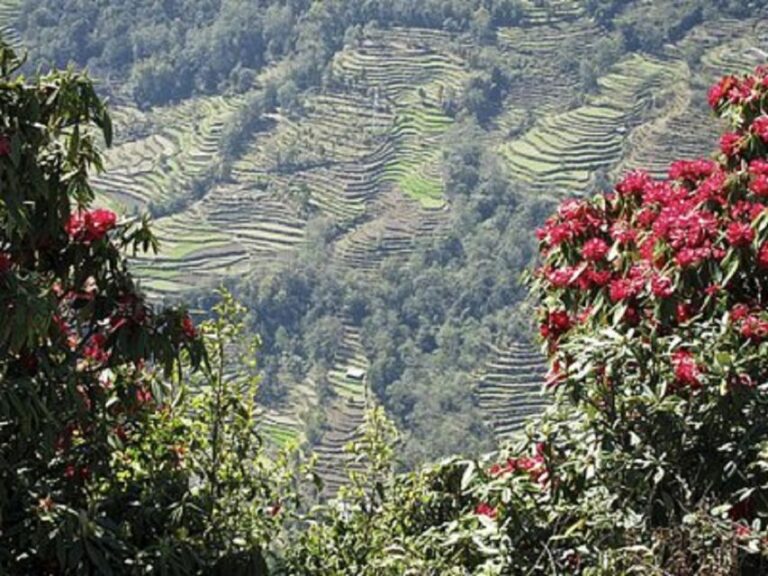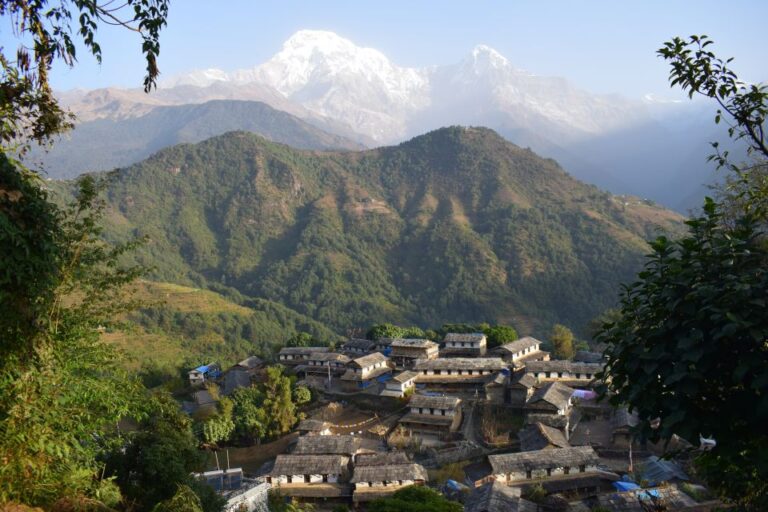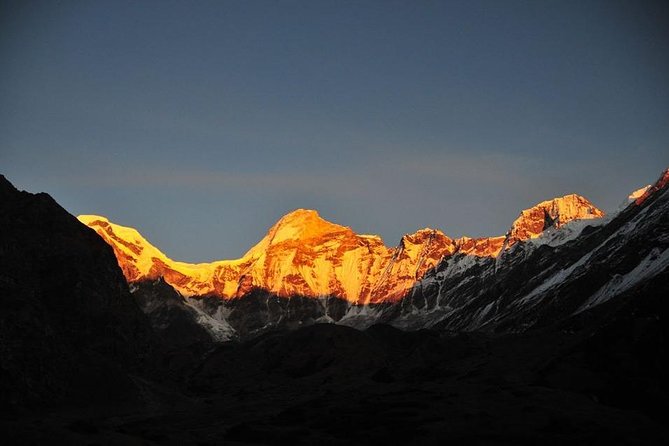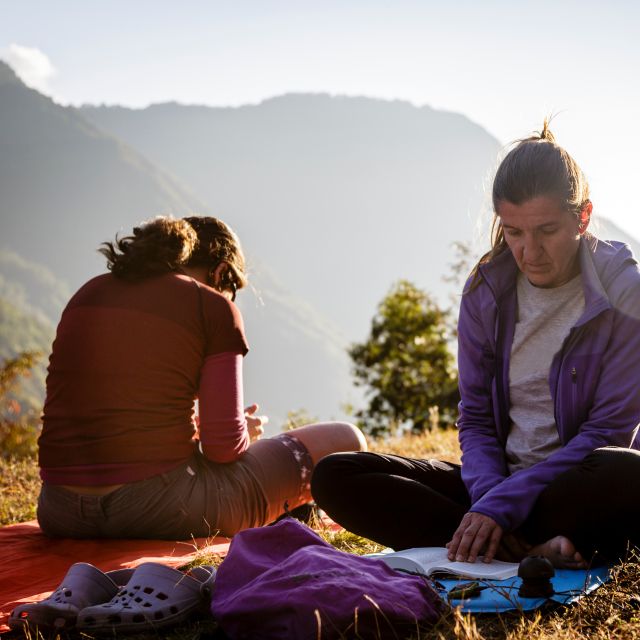Everest Base Camp Trekking
In the shadow of Mount Everest, where dreams touch the sky, lies the Everest Base Camp Trekking adventure. As the crisp mountain air fills their lungs, trekkers find themselves on a path less traveled, each step a testament to human resilience and nature’s grandeur.
But beyond the sheer physical challenge lies a world of culture and breathtaking landscapes waiting to be explored. From navigating rugged terrain to embracing local customs, every moment on this journey holds a promise of self-discovery and wonder.
Explore the uncharted territories and uncover the secrets that await those daring enough to venture into the heart of the Himalayas.
Good To Know

- Prepare physically and mentally for challenging routes and high altitude.
- Rent essential gear in Kathmandu or Lukla for a comfortable trek.
- Prioritize altitude sickness prevention through gradual acclimatization and hydration.
- Immerse in local culture, interact with Sherpa communities, and explore ancient monasteries.
It's also worth checking out some other tours and experiences nearby.
Trekking Routes and Difficulty Levels
When embarking on the Everest Base Camp trekking adventure, trekkers encounter various routes with diverse difficulty levels to suit different preferences and capabilities. The trail challenges range from rocky terrain to steep ascents, requiring trekkers to be prepared physically and mentally.
Acclimatization strategies are crucial due to the high altitude, with gradual ascents and rest days to prevent altitude sickness. Weather conditions can be unpredictable, with temperatures dropping significantly at higher altitudes and the possibility of snowfall even in the spring and autumn seasons.
Trekkers should consider route alternatives based on weather forecasts and their fitness levels to ensure a safe and enjoyable journey to the base camp.
Packing Essentials and Gear Rental
As trekkers prepare for the Everest Base Camp adventure, ensuring they’ve the necessary packing essentials and gear rental is paramount for a safe and enjoyable journey through the diverse terrains and challenging trails. Essential gear such as sturdy hiking boots, warm layers, a reliable backpack, and a quality sleeping bag are crucial for the trek.
Many trekkers opt for gear rental options available in Kathmandu or Lukla, including items like down jackets, trekking poles, and sleeping bags, which can lighten the load and save luggage space. It’s advisable to check the condition of rented gear thoroughly before embarking on the trek to ensure functionality and comfort throughout the journey.
Properly packed essentials and well-chosen rental gear can make a significant difference in the overall trekking experience.
Altitude Sickness Prevention Tips
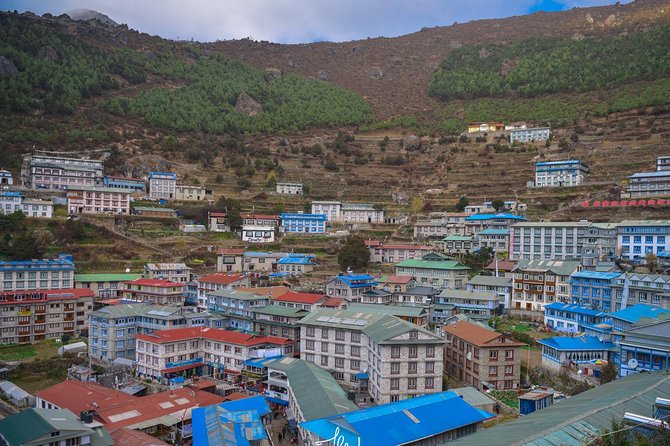
To prevent altitude sickness while trekking to Everest Base Camp, trekkers should focus on gradual acclimatization and staying properly hydrated throughout the journey. Altitude sickness, caused by the body’s struggle to adapt to decreased oxygen levels at higher elevations, can be mitigated by ascending slowly, allowing time for acclimatization. It’s essential to listen to your body, recognize symptoms like headaches or dizziness, and not push too hard too fast.
Hydration is key in preventing altitude sickness, so drink plenty of water and avoid alcohol and caffeine. Plus, consider incorporating acclimatization techniques such as taking rest days, climbing high and sleeping low, and consuming a diet rich in carbohydrates. By being mindful of these preventive measures, trekkers can increase their chances of a successful and enjoyable trek to Everest Base Camp.
Tea House Accommodation Experience
Altitude sickness prevention is crucial during the Everest Base Camp trek; now, exploring the Tea House Accommodation Experience offers a glimpse into the cozy lodging options available along the trekking route. Tea house hospitality plays a significant role in providing a warm and welcoming atmosphere for trekkers. These accommodations not only offer a place to rest but also a chance to interact with fellow trekkers, creating a sense of camaraderie among trekking companions. Below is a table showcasing some features of the Tea House Accommodation Experience:
| Tea House Accommodation Features | Description |
|---|---|
| Cozy Rooms | Comfortable beds and blankets |
| Dining Area | Delicious meals with local flavors |
| Common Areas | Shared spaces for socializing |
The Tea House Accommodation Experience enhances the overall trekking journey, making it memorable for all adventurers.
Local Culture and Highlights
Enjoy the vibrant local culture and discover the captivating highlights along the Everest Base Camp trekking route.
-
Sherpa Traditions: Encounter the rich cultural heritage of the Sherpa people, known for their mountaineering expertise and warm hospitality. Learn about their traditions, language, and way of life as you trek through their villages.
-
Buddhist Monasteries: Explore ancient Buddhist monasteries nestled in the Himalayan mountains. Experience the spiritual serenity of these sacred sites, adorned with prayer flags fluttering in the mountain breeze.
-
Local Festivals: If your trek aligns with local festivals, witness colorful celebrations filled with traditional dances, music, and rituals, offering a unique glimpse into the Sherpa culture.
-
Cultural Interactions: Engage with local Sherpa communities, share a meal, and exchange stories, creating unforgettable memories and fostering cultural understanding.
Here's a few more nearby tours and experiences we think you'll like.
Frequently Asked Questions
Is It Possible to See Mount Everest From the Everest Base Camp Trekking Route?
In clear weather conditions, visibility from Everest Base Camp trekking route offers glimpses of Mount Everest. Altitude sickness and acclimatization are crucial due to high elevations. It is possible to see Mount Everest on this iconic journey.
Are There Any Specific Dietary Requirements or Restrictions to Be Aware of While Staying in Tea Houses During the Trek?
When staying in tea houses during treks, travelers should be mindful of food options and any allergies. Embracing cultural experiences and traditions, they can enjoy local cuisine. Respectful of dietary restrictions, tea houses often offer vegetarian and gluten-free choices.
What Are the Bathroom Facilities Like in the Tea Houses Along the Trekking Route?
When discussing bathroom facilities at tea houses, travelers often inquire about toilet hygiene and privacy concerns. These factors play a crucial role in ensuring a comfortable and pleasant experience during the trekking journey.
Are There Any Opportunities to Interact With Local Sherpa Communities or Learn About Their Culture During the Trek?
Travelers can enjoy local customs by engaging with Sherpa communities along the trek. Experience Sherpa hospitality firsthand, learning about their rich culture. Interactions may include traditional ceremonies, local cuisine, and insights into daily life.
Are There Any Unique Wildlife Sightings or Natural Attractions to Look Out for Along the Everest Base Camp Trekking Route?
While trekking, travelers may encounter unique wildlife like rare bird species, ideal for bird watching enthusiasts. Plus, the route offers botanical wonders with unique flora, adding to the natural allure of the journey.
Not for you? Here's more of our most recent tour reviews happening neaby
- Upper Mustang Trekking – 15 Days
- Everest Helicopter Tour: Experience the Ultimate Aerial Adventure of a Lifetime
- 12 Days Annapurna Circuit Trek
- Private Half-Day Off-Road Safari in Shivapuri-Nagarjun Park – Kathmandu
- Nepal Multisport Adventure Tour
- 7 Days Honeymoon Tour in Nepal
- Nepal Cultural & Adventure
- Bandipur Homestay Tour
- Tibet Tour With Everest Base Camp – FLY IN DRIVE OUT- 8 DAYS
- Day Hiking Near Kathmandu Valley.
- 4 Days Langtang Valley Short Trek
- 12 Days Everest Base Camp Trek in Nepal
- Lobuche East Peak Climb With Everest Base Camp Trek
- 4-Day Kathmandu Valley UNESCO World Heritage Sites Tour
- UNESCO World Heritage Site Tour in Kathmandu
The Sum Up
Embark on the adventure of a lifetime with the Everest Base Camp Trekking experience. Explore the majestic Himalayas, challenge yourself with varying difficulty levels, and learn about the rich local culture.
Remember to pack essentials, be prepared for altitude sickness, and enjoy the unique tea house accommodation.
With proper preparation and a sense of adventure, this expedition promises an unforgettable journey to the top of the world.

